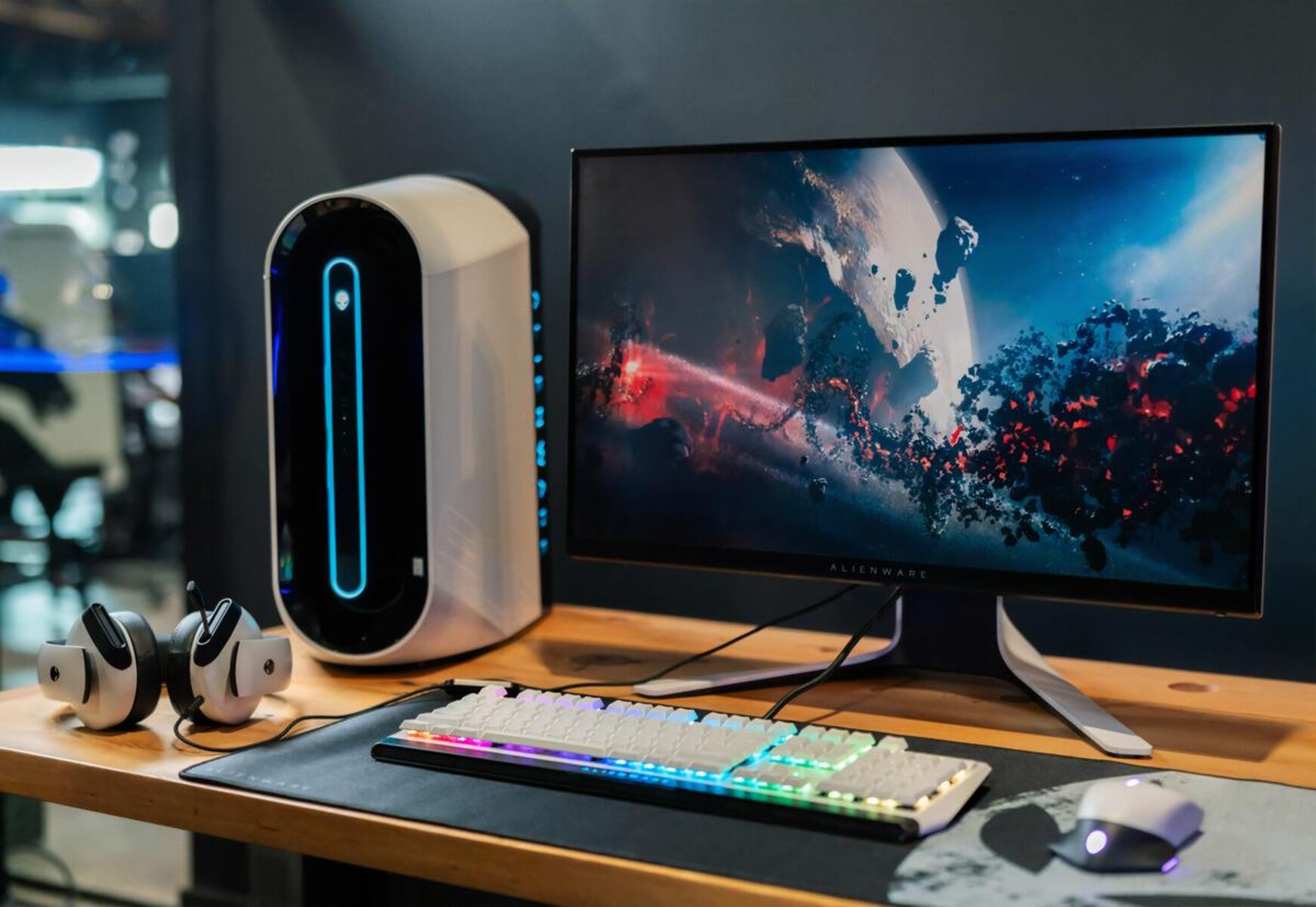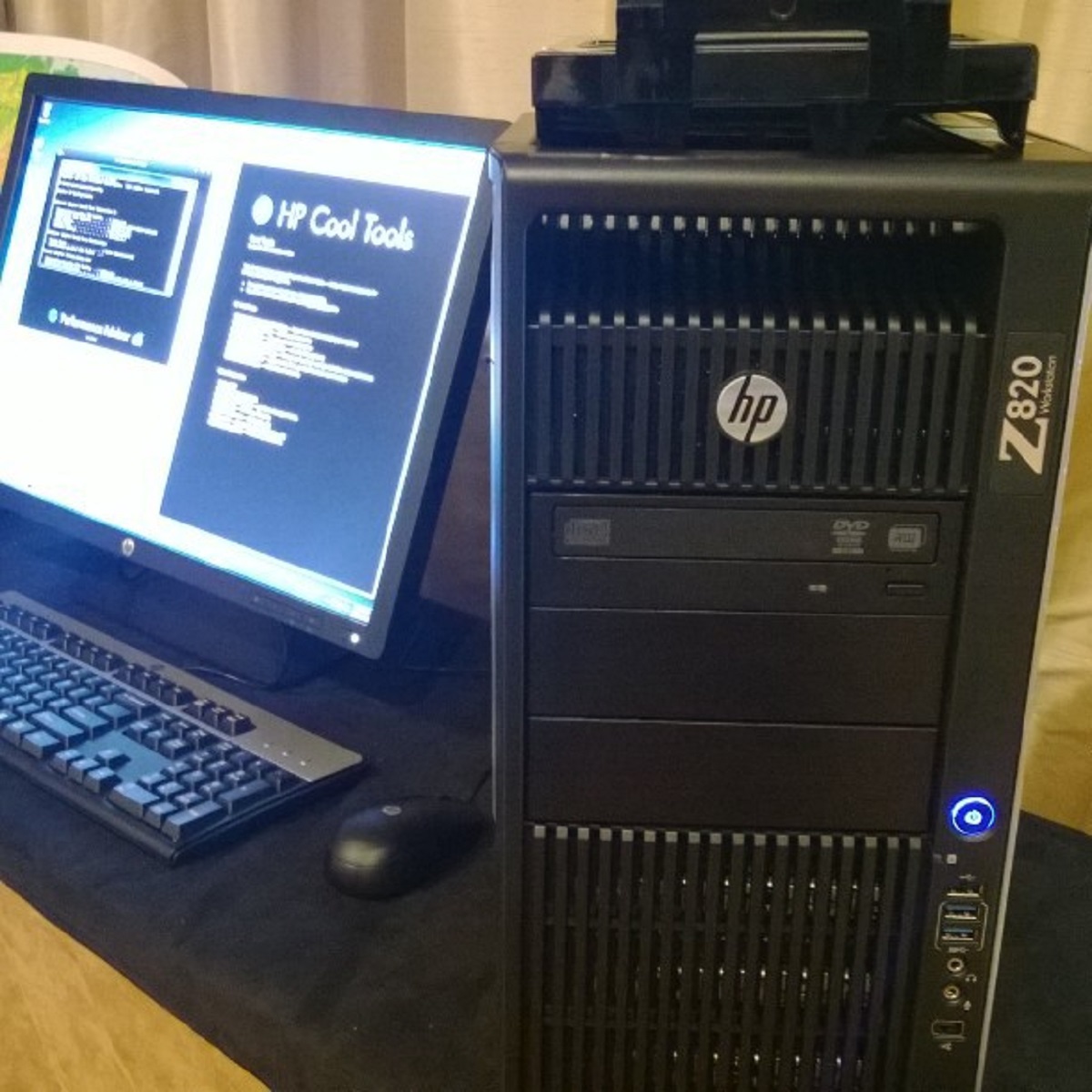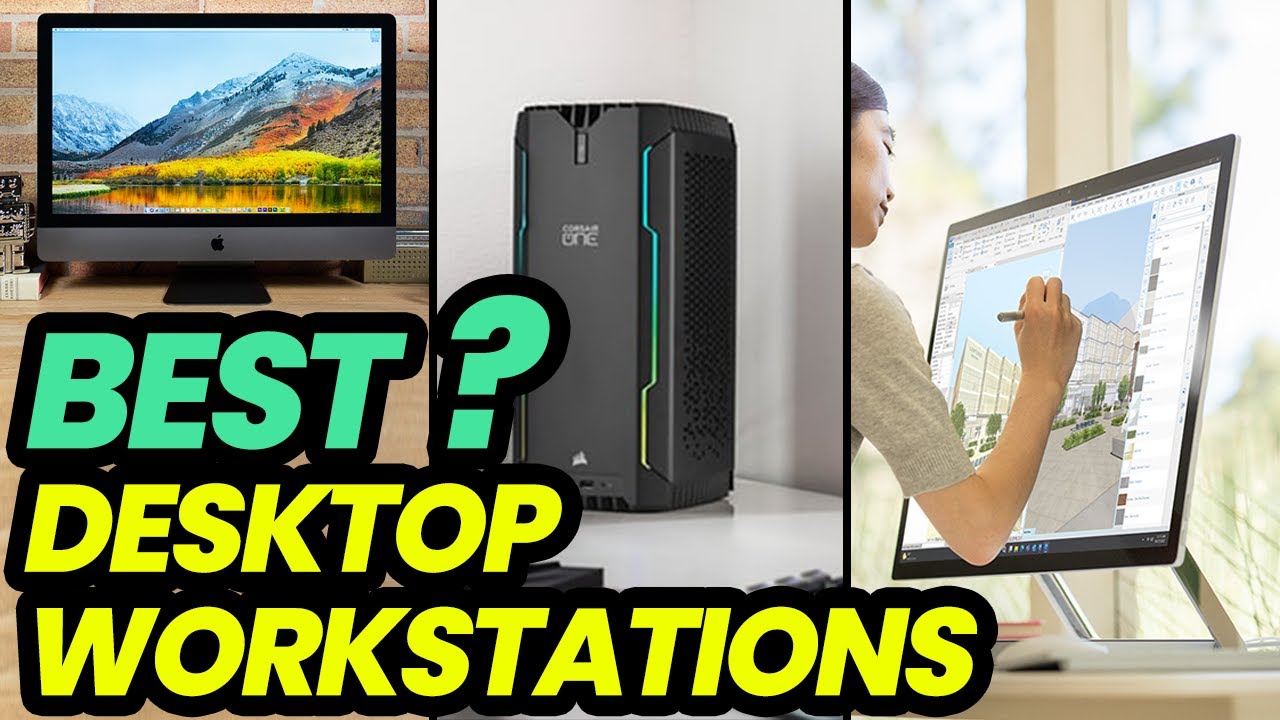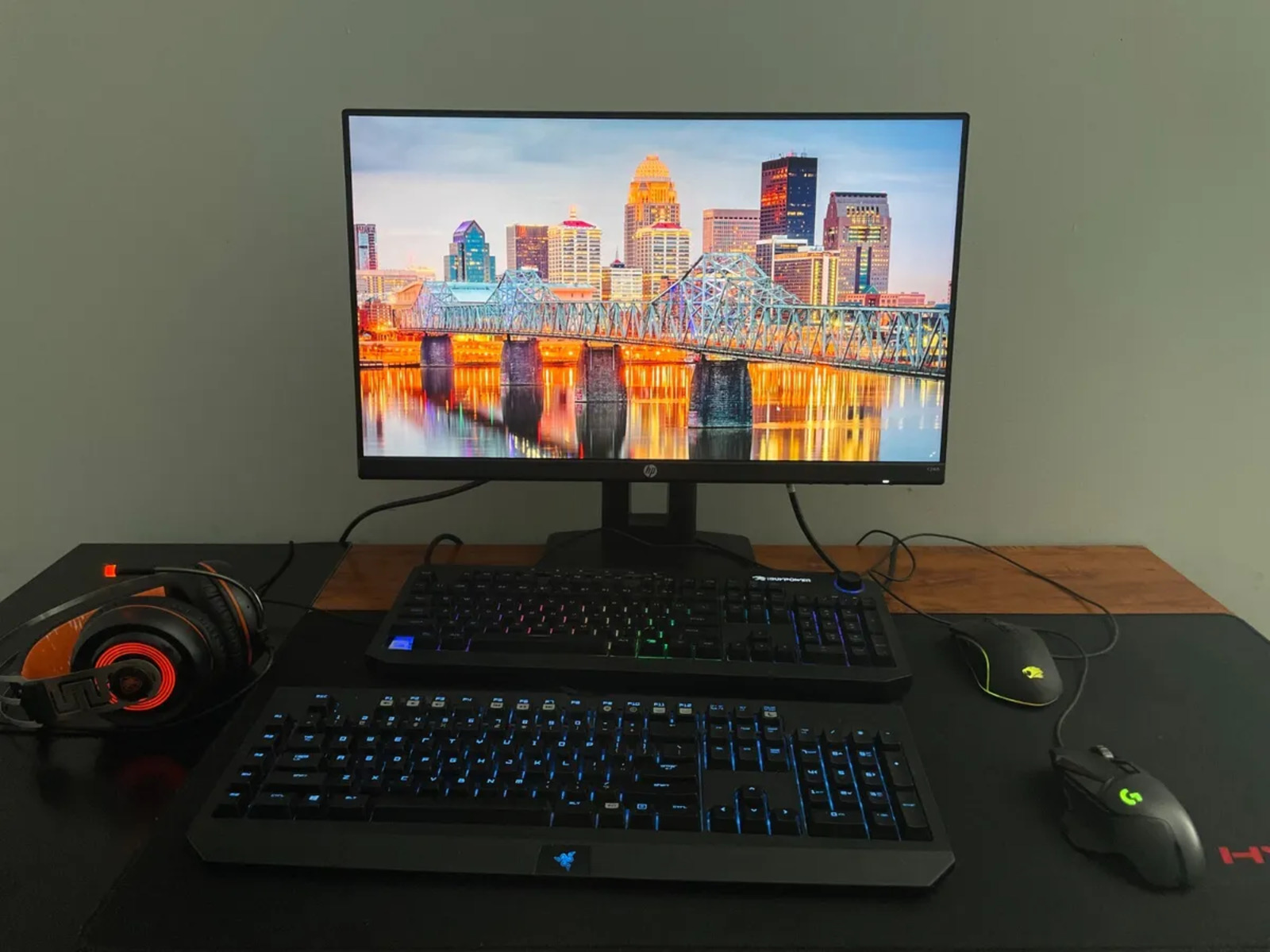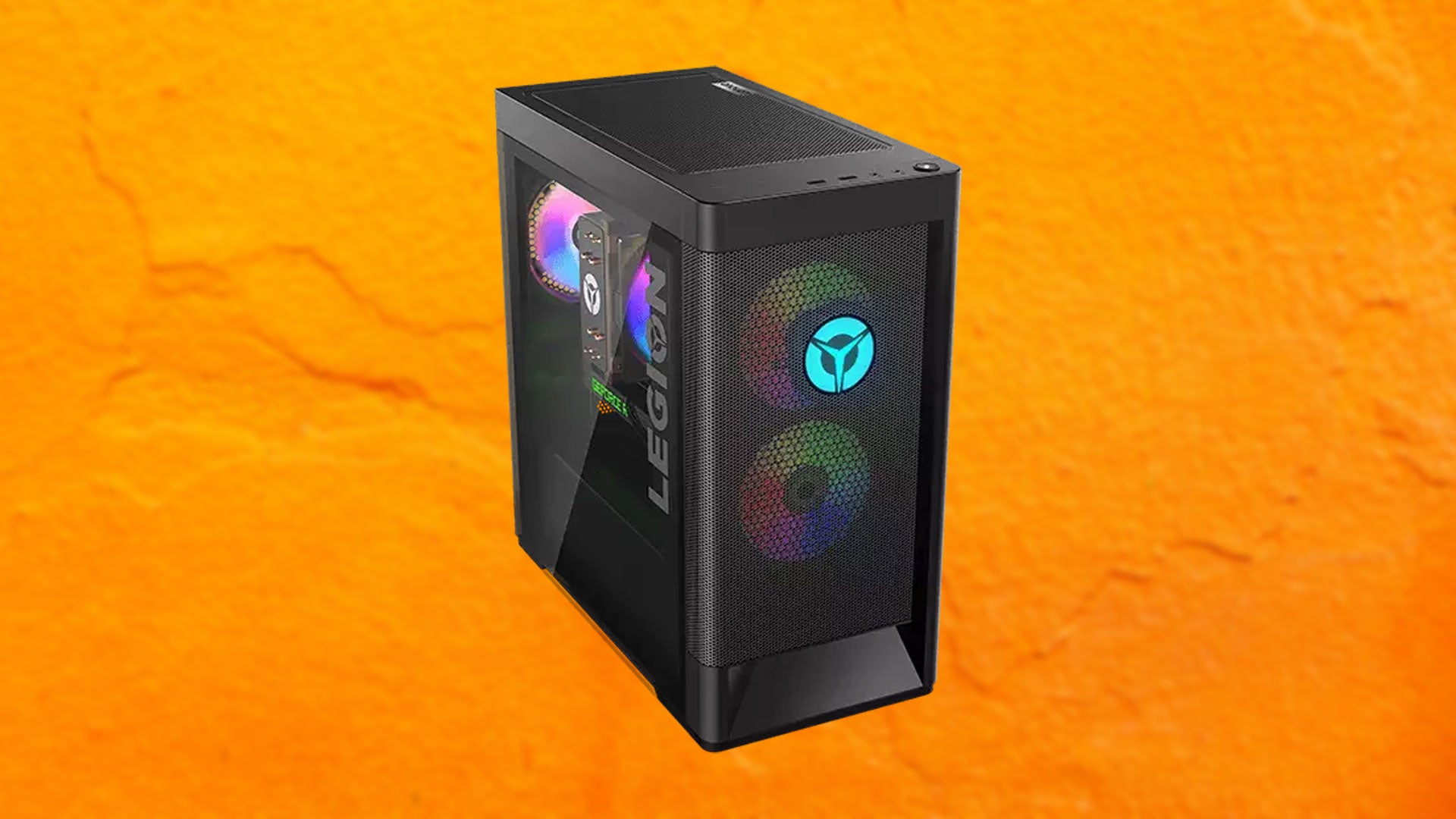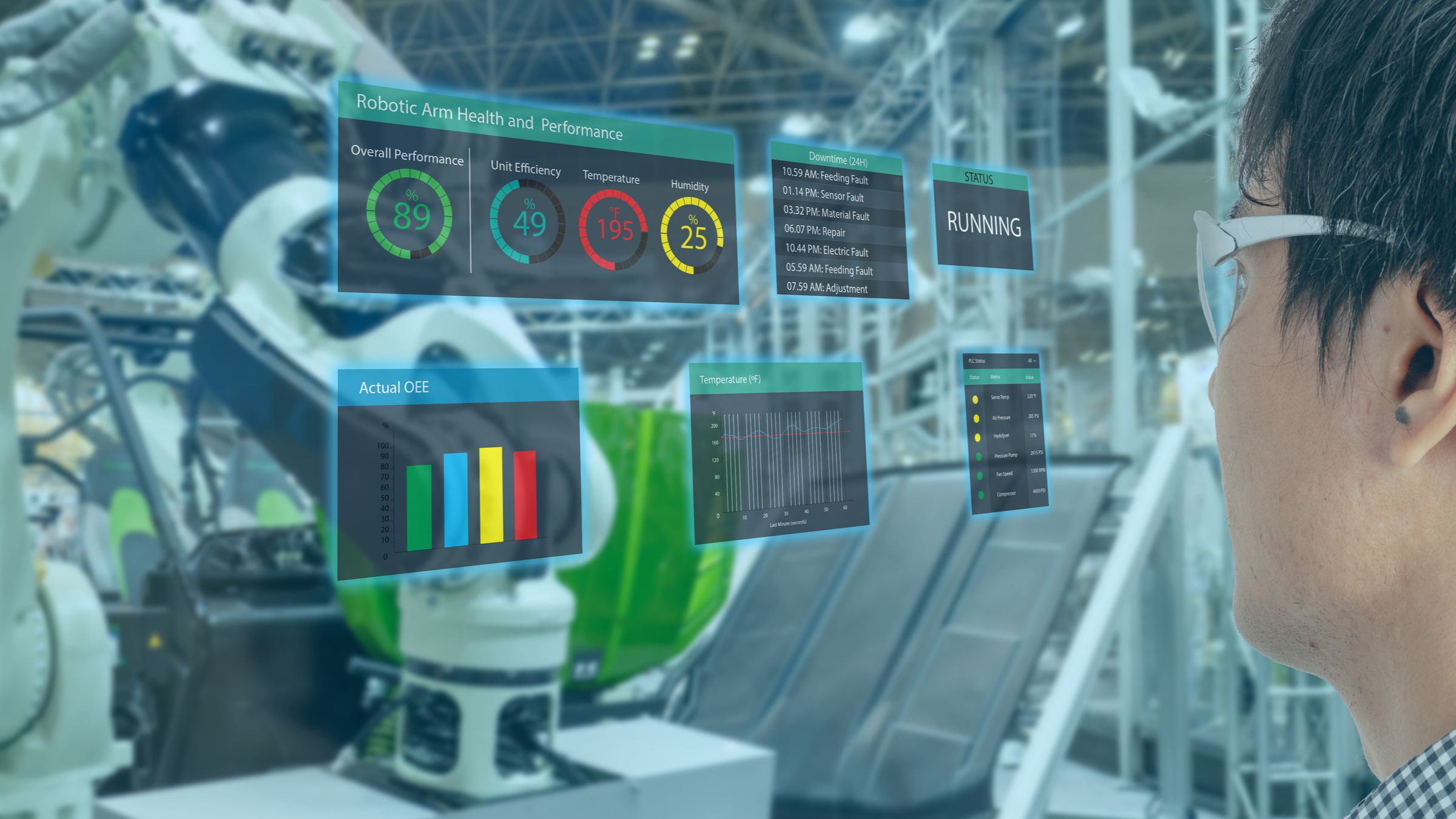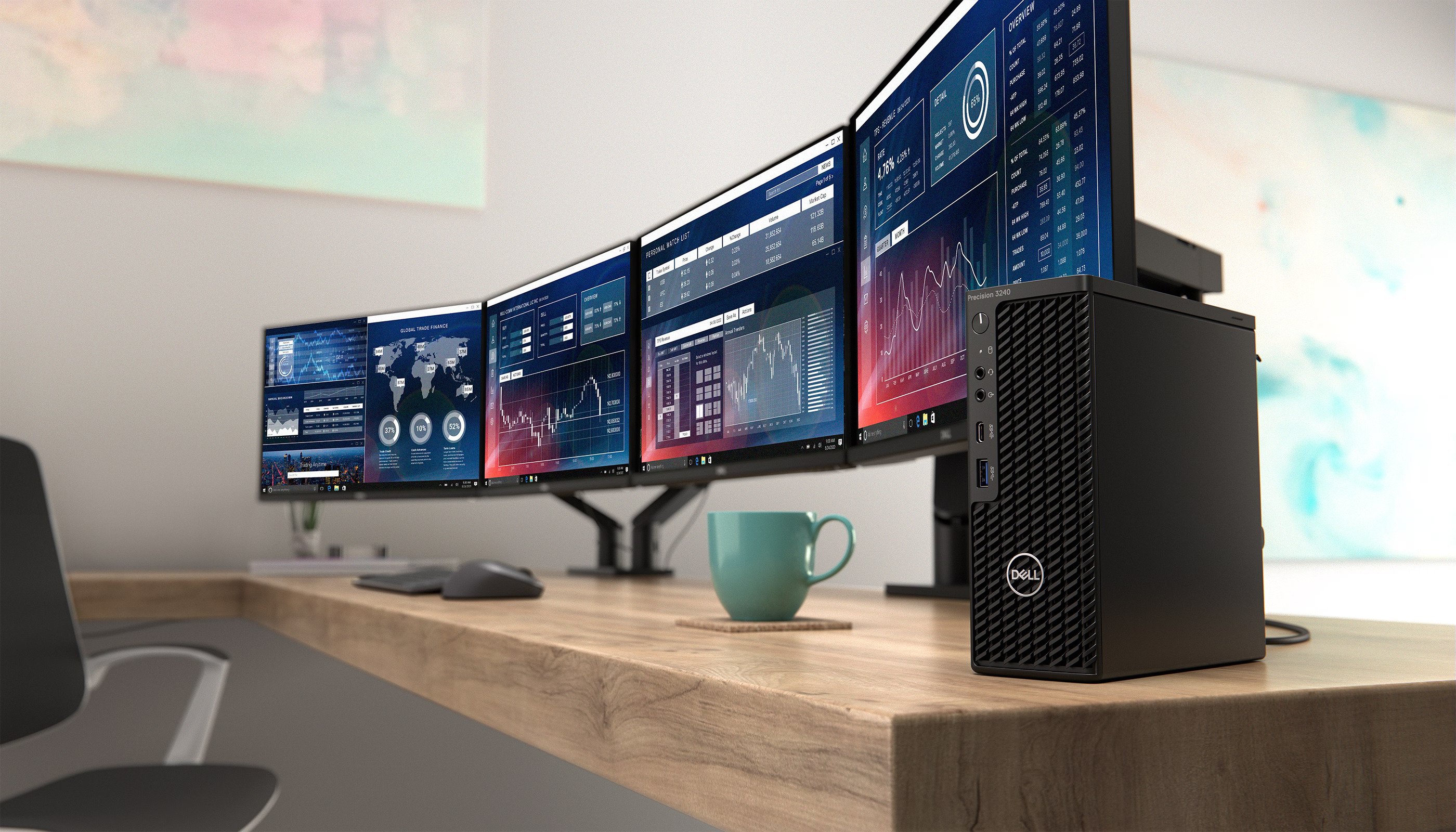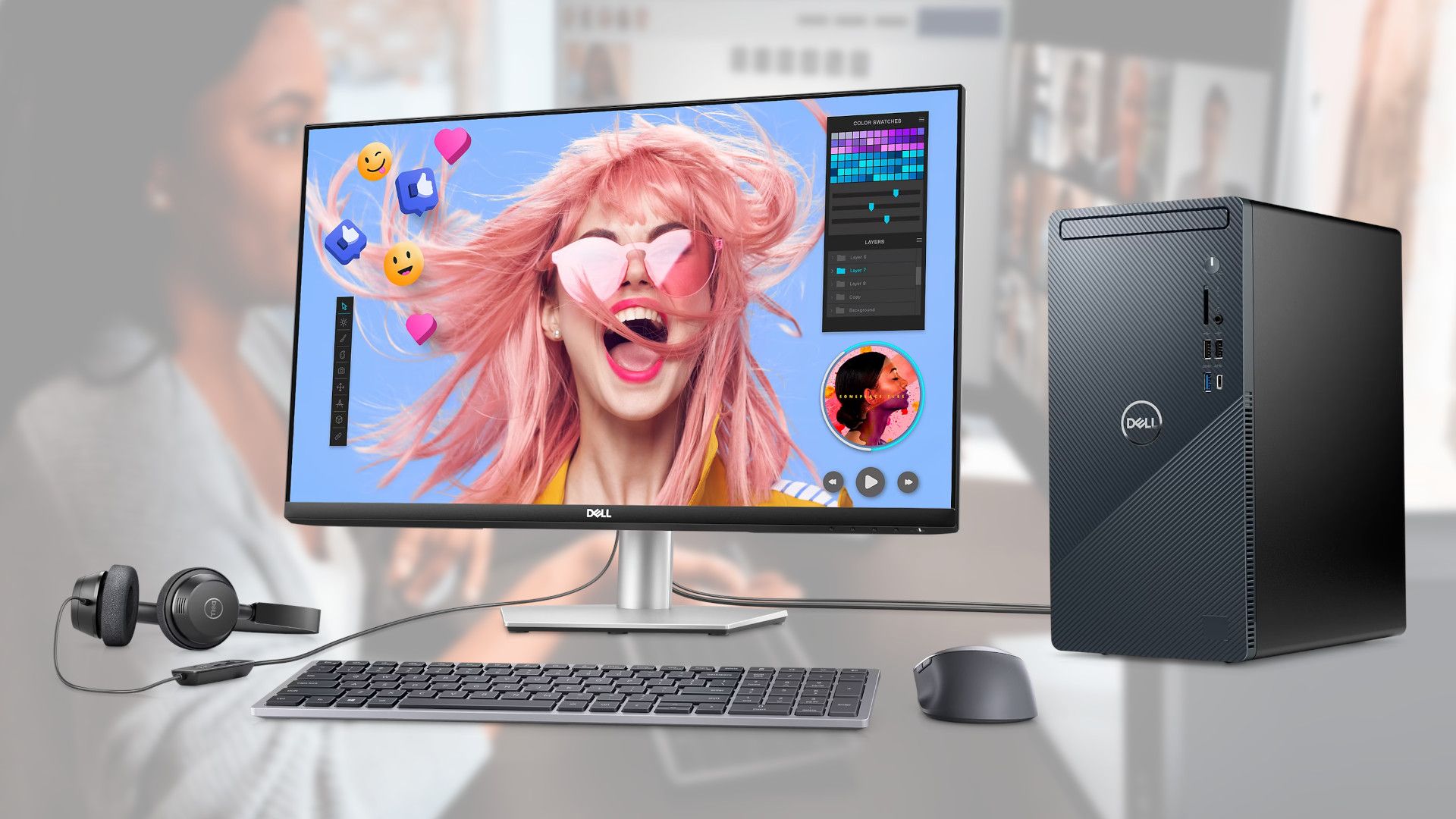Introduction
Welcome to the world of high-performance PC workstations! Whether you are a professional designer, a hardcore gamer, or a video editor, having a fast and efficient workstation can make a world of difference in your productivity and overall experience. A well-built PC can handle demanding tasks with ease, providing you with seamless performance and responsiveness.
Building your own PC workstation gives you the flexibility to customize every component to meet your specific needs and preferences. However, with so many options available in the market, it can be overwhelming to choose the right components to create the perfect balance of speed, power, and reliability. This is where this guide comes in – to help you navigate the sea of choices and make informed decisions.
In this article, we will explore the key factors to consider when building a fast PC workstation. We will delve into the selection of the processor, graphics card, RAM, storage, motherboard, power supply, monitor, and peripherals. Additionally, we will discuss the importance of software optimization and share useful tips for assembling your PC.
By the end of this guide, you will have a clear understanding of the essential elements that contribute to the speed and performance of a workstation PC. So, without further ado, let’s dive in and explore the world of fast PC workstations!
Selecting the Right Processor
The processor, or CPU (Central Processing Unit), is the brain of your workstation. It determines how fast and efficiently your computer can perform tasks. When choosing a processor, there are a few key factors to consider.
The first consideration is the number of cores. Multiple cores allow your processor to handle multiple tasks simultaneously, improving overall performance. For most users, a quad-core processor is sufficient for everyday tasks like web browsing, document editing, and multimedia consumption. However, if you work with resource-intensive software or perform heavy multitasking, you may want to consider a processor with six or eight cores.
In addition to the number of cores, clock speed is another important factor to consider. Clock speed, measured in GHz (gigahertz), determines how fast the processor can execute instructions. A higher clock speed generally means faster performance. However, keep in mind that higher clock speeds also generate more heat, which might require better cooling solutions.
When it comes to selecting a processor brand, the two main options are Intel and AMD. Both offer a range of processors suitable for various budgets and performance requirements. Intel processors are known for their strong single-threaded performance, making them ideal for applications that don’t utilize multiple cores effectively. On the other hand, AMD processors typically offer better value for money, with more cores and competitive multi-threaded performance.
Lastly, consider the socket compatibility of your chosen processor with the motherboard. Different processors require specific motherboard sockets for installation. Ensure that the processor you choose is compatible with the motherboard you plan to use.
Overall, selecting the right processor requires finding a balance between budget, performance needs, and compatibility. Researching the latest models and reading reviews can help you make an informed decision that meets your specific requirements.
Choosing the Perfect Graphics Card
The graphics card, or GPU (Graphics Processing Unit), is a crucial component for workstation PCs, especially for tasks like graphic design, video editing, and gaming. It handles the rendering and display of visuals on your screen. Selecting the right graphics card requires careful consideration of your specific needs and budget.
One of the first factors to consider is the purpose of your workstation. If you mainly use your PC for graphic design or 3D rendering, you may want to prioritize a graphics card with a high amount of VRAM (Video RAM). VRAM helps in handling large graphic files and running graphics-intensive software smoothly. On the other hand, if your primary use is gaming, you may prioritize GPU power and look for a card that offers high frame rates and supports the latest gaming technologies.
Another consideration is the performance target you want to achieve. If you are working with 4K-resolution content or plan to run multiple monitors simultaneously, you’ll need a powerful graphics card that can support such demanding tasks. Look for cards with higher CUDA core counts or stream processors to handle the increased workload effectively.
When it comes to GPU brands, the two main players in the market are NVIDIA and AMD. NVIDIA graphics cards, known for their excellent performance and CUDA technology, are popular among professionals and gamers. On the other hand, AMD cards provide great value for the money and often offer competitive performance.
Finally, consider the cooling solution of the graphics card. Cards with better cooling systems, such as custom cooling fans or liquid cooling, can operate at lower temperatures, resulting in improved performance and longevity.
It’s also important to ensure compatibility with your motherboard and power supply. Check the card’s PCIe slot compatibility and power requirements to avoid any compatibility issues during installation.
Overall, choosing the perfect graphics card entails finding the right balance between your specific requirements, budget, and compatibility with your PC components. Researching and comparing different models will help you make an informed decision and ensure that your workstation performs optimally for your intended tasks.
Optimal RAM Size and Speed
RAM, or Random Access Memory, plays a vital role in the performance of your PC workstation. It is responsible for temporarily storing data that the CPU needs to access quickly. When it comes to RAM, there are two key factors to consider: size and speed.
The size of your RAM determines how much data your computer can store and access at any given time. For most users, 8GB to 16GB of RAM is sufficient for general computing tasks like web browsing, document editing, and light multitasking. However, if you work with resource-intensive applications or frequently run several demanding programs simultaneously, you may want to opt for 32GB or even 64GB of RAM to ensure optimal performance.
In addition to size, the speed of your RAM also affects overall performance. The RAM speed is measured in MHz (megahertz), and a higher speed indicates faster data transfer between the RAM and CPU. When choosing RAM, look for modules that offer faster speeds, such as DDR4 3200MHz or DDR4 3600MHz. However, keep in mind that the speed compatibility depends on your motherboard’s capabilities. Verify that your motherboard supports the desired RAM speed before making a purchase.
It’s essential to strike a balance between RAM size and speed based on your specific needs and budget. If you primarily use your workstation for general computing tasks, opting for a larger RAM size over higher speed can be more beneficial. However, if you work with memory-intensive applications like video editing or 3D rendering, it may be worth investing in faster RAM modules to ensure smooth and efficient performance.
Remember to check the maximum RAM capacity supported by your motherboard. Some motherboards have limitations on the amount of RAM they can accommodate, so make sure to choose the appropriate size within the supported range.
Lastly, ensure that the RAM modules you choose are compatible with your motherboard’s DDR generation. For example, DDR3 and DDR4 RAM modules are not interchangeable and require compatible motherboard slots.
By carefully considering the optimal RAM size and speed for your specific needs and ensuring compatibility, you can maximize the performance of your PC workstation and ensure smooth multitasking and efficient operation of resource-intensive applications.
The Importance of Storage
When it comes to PC workstations, storage is a critical component that determines how fast your system can access and store data. It plays a vital role in boot times, file transfer speeds, and overall system responsiveness. When selecting storage options for your workstation, consider the following factors: storage type, capacity, and performance.
There are two primary types of storage: Hard Disk Drives (HDDs) and Solid State Drives (SSDs). HDDs are traditional mechanical drives that offer a larger storage capacity at a more affordable price per gigabyte. They are suitable for storing large files and applications that don’t require fast read/write speeds. On the other hand, SSDs are much faster and more reliable than HDDs. They use flash memory to store data, resulting in quicker boot times and faster file access. SSDs are highly recommended for the operating system and frequently used applications to maximize performance and productivity.
The capacity of storage determines how much data you can store on your workstation. For most users, a storage capacity of at least 500GB to 1TB is sufficient for everyday computing needs. However, if you deal with large media files, videos, or run resource-intensive applications, you may want to consider higher capacity drives or even multiple drives for efficient data management.
When it comes to storage performance, consider the read and write speeds. SSDs generally offer faster read and write speeds compared to HDDs. Look for SSDs with higher Sequential Read/Write speeds measured in megabytes per second (MB/s). This will ensure quicker data access and faster file transfers, resulting in improved overall system performance.
In addition to the primary storage, consider adding secondary storage such as external hard drives or network-attached storage (NAS) for data backup and archiving. This will help safeguard your important files and provide a convenient storage solution for large media libraries.
Lastly, ensure that your motherboard has the necessary SATA or M.2 slots to accommodate the desired storage drives. Check the specifications and compatibility before making your selection.
Overall, choosing the right storage options for your workstation is crucial for optimizing performance and ensuring efficient data management. By combining the speed and reliability of SSDs with the capacity and affordability of HDDs, you can create a well-rounded storage solution that meets your specific needs.
Selecting the Right Motherboard
The motherboard is the central hub of your PC workstation, connecting and coordinating all the vital components. It is crucial to choose the right motherboard that matches your processor, RAM, storage, and other peripherals. When selecting a motherboard, consider the following factors: compatibility, form factor, expansion slots, and chipset.
Compatibility is key when choosing a motherboard. Ensure that it supports the socket type of your chosen processor. For example, if you are using an Intel processor, make sure the motherboard has the appropriate LGA socket, such as LGA1151 or LGA1200. AMD processors typically use the AM4 or TR4 socket, so ensure compatibility with the motherboard of your choice.
Form factor refers to the size and layout of the motherboard. The most common form factors are ATX, micro-ATX, and mini-ITX. ATX motherboards offer the most expansion slots and connectivity options, making them suitable for high-performance workstations. Micro-ATX and mini-ITX motherboards are smaller in size, offering more compact builds with fewer expansion slots.
Consider the number and type of expansion slots available on the motherboard. These slots allow you to connect additional components such as graphics cards, sound cards, or networking cards. Make sure the motherboard has enough PCIe slots and compatible slots for your specific expansion needs.
The chipset of the motherboard determines its features and capabilities. Different chipsets offer varying levels of performance, connectivity, and overclocking capabilities. Research the specific chipset features and ensure they align with your requirements. For example, if you plan to overclock your processor, look for a motherboard with an overclocking-friendly chipset.
Other factors to consider include the number of RAM slots, SATA and M.2 ports for storage connectivity, USB ports, networking capabilities, and BIOS features. These elements can greatly enhance the functionality and versatility of your workstation.
Lastly, ensure that the motherboard has quality components and is manufactured by a reputable brand. A well-built motherboard provides stability, reliability, and longevity to your PC workstation.
By carefully considering the compatibility, form factor, expansion slots, chipset, and brand reputation, you can select the right motherboard that serves as a solid foundation for your PC workstation and meets your specific needs.
Power Supply Considerations
The power supply unit (PSU) is a crucial component of any PC workstation, responsible for supplying the necessary power to all the other components. Selecting the right power supply requires careful consideration of factors such as wattage, efficiency, and connectivity.
First and foremost, determine the wattage requirements of your system. This will depend on the overall power consumption of your components, including the processor, graphics card, storage drives, and peripherals. A higher wattage PSU provides more headroom for future upgrades or power-hungry components, ensuring stability and reliable performance.
Efficiency is another important factor to consider. PSUs are rated by their efficiency, typically labeled as 80 Plus Bronze, Silver, Gold, Platinum, or Titanium. Higher-rated PSUs offer increased efficiency, meaning they convert more of the incoming AC power into DC power, resulting in less wasted energy and lower operating temperatures. Additionally, an efficient PSU can help save on electricity bills and contribute to a more environmentally-friendly system.
Consider the connectivity options of the power supply. Ensure that it has enough connectors for all your components, such as SATA connectors for storage drives, PCIe connectors for graphics cards, and CPU power connectors. Modern PSUs often come with modular or semi-modular designs, allowing you to connect only the necessary cables and reducing clutter within your system.
When it comes to reliability, choose a power supply from a reputable brand known for producing high-quality units. A reliable PSU with stable voltage output and proper protection mechanisms safeguards your components from electrical fluctuations and ensures the longevity of your workstation.
Noise levels are also worth considering, particularly if you prioritize a quiet working environment. Look for PSUs with high-quality fans and noise reduction features to minimize fan noise. Additionally, some PSUs have fanless modes or lower RPM fan profiles that activate only during heavy loads or high temperatures, further reducing noise.
Lastly, consider the warranty and customer support provided by the PSU manufacturer. A longer warranty period, such as five or ten years, indicates the manufacturer’s confidence in the quality and reliability of their product. Additionally, responsive customer support can be invaluable if any issues arise.
By carefully considering the wattage, efficiency, connectivity, reliability, noise levels, and warranty of the power supply, you can ensure a stable and efficient power delivery to your PC workstation, protecting your components and promoting optimal performance.
Cooling your Workstation
Efficient cooling is vital for maintaining the optimal performance and longevity of your PC workstation. High-performance components generate a significant amount of heat, and effective cooling solutions help dissipate that heat and prevent overheating. When it comes to cooling your workstation, there are several factors to consider: airflow, CPU cooling, GPU cooling, and case fans.
Proper airflow is essential for cooling your entire system. Ensure that your workstation has adequate airflow by positioning intake and exhaust fans strategically. Intake fans should draw cool air into the case, while exhaust fans expel hot air. This flow of air helps maintain a lower overall temperature within the system. Additionally, well-designed cases with proper cable management and routing channels can contribute to improved airflow.
CPU cooling is crucial as the processor can generate considerable heat under heavy workloads. There are two main types of CPU coolers: air coolers and liquid coolers. Air coolers use heatsinks and fans to draw heat away from the CPU, while liquid coolers utilize liquid coolant to transfer heat via a radiator and fans. Liquid coolers tend to offer better cooling efficiency but can be more expensive.
Graphics cards, or GPUs, also require effective cooling to prevent overheating and maintain optimal performance. Most modern GPUs come with built-in cooling mechanisms like fans or heat pipes. However, if you engage in heavy gaming or use your workstation for GPU-intensive tasks, consider investing in aftermarket GPU coolers or graphics card models with advanced cooling solutions to ensure efficient heat dissipation.
Case fans are additional fans placed within the case to improve airflow and cool various components. Depending on the size and layout of your case, you can install additional intake or exhaust fans to enhance overall cooling. Case fans come in various sizes and can be either air-cooled or liquid-cooled, depending on your preferences and budget.
Regular maintenance is essential for optimal cooling performance. Dust accumulation can hinder airflow and lead to higher temperatures. Clean your workstation regularly, removing dust from fans, heatsinks, and filters to ensure unrestricted airflow. This will help prevent the buildup of heat and maintain efficient cooling.
Lastly, consider the noise level of your cooling solutions, particularly if you require a quiet working environment. Choose fans and coolers with lower noise levels or noise reduction features to minimize any disruptive sounds.
By focusing on proper airflow, CPU cooling, GPU cooling, case fan placement, regular maintenance, and noise reduction, you can ensure effective cooling for your workstation, promoting optimal performance and prolonging the lifespan of your components.
Choosing the Right Monitor
The monitor is one of the most critical components of your PC workstation as it directly affects your visual experience and productivity. When selecting a monitor, consider factors such as display size, resolution, panel type, refresh rate, and connectivity options.
Display size is a personal preference and depends on your workspace and usage requirements. Common sizes range from 24 to 34 inches, with larger displays offering more screen real estate for multitasking or immersive gaming experiences.
Resolution refers to the number of pixels on the screen and directly impacts the level of detail and clarity. Higher resolutions, such as 1080p (Full HD), 1440p (Quad HD), or 4K (Ultra HD), provide crisper images and more screen real estate for multitasking. Choose a resolution based on your specific needs and budget.
The panel type influences the overall image quality, color accuracy, and viewing angles. There are three main panel types: TN (Twisted Nematic), IPS (In-Plane Switching), and VA (Vertical Alignment). TN panels offer faster response times and lower cost but generally have poorer color reproduction. IPS panels provide better color accuracy and wider viewing angles but may have slightly slower response times. VA panels offer high contrast ratios and deep blacks but can have slower response times in some cases.
Refresh rate determines how many times the monitor can refresh the image per second, typically measured in Hertz (Hz). A higher refresh rate, such as 144Hz or 240Hz, provides smoother motion and reduces motion blur, making it ideal for fast-paced gaming or multimedia editing. However, keep in mind that higher refresh rates often come with a higher cost.
Connectivity options are crucial for connecting your monitor to the PC. The most common connection types include HDMI, DisplayPort, and DVI. Ensure that your chosen monitor has the necessary ports compatible with your PC’s graphics card and other devices.
Consider additional features like adaptive sync technologies, such as AMD FreeSync or NVIDIA G-Sync, which reduce screen tearing and provide a smoother gaming experience. Some monitors also offer ergonomic features like height adjustment, tilt, and swivel for improved comfort during extended use.
Lastly, assess the quality and reputation of the monitor manufacturer to ensure a reliable and durable purchase. Reading reviews and customer feedback can provide insights into product quality and customer support.
By considering factors like display size, resolution, panel type, refresh rate, connectivity options, additional features, and manufacturer reputation, you can choose a monitor that meets your specific needs and enhances your visual experience and productivity.
Keyboard and Mouse: Don’t Overlook Comfort
While selecting components for your PC workstation, it’s important not to overlook the comfort and usability of your keyboard and mouse. These input devices play a crucial role in your daily work or gaming sessions, and a comfortable and ergonomic setup can enhance your productivity and prevent discomfort or strain. When choosing a keyboard and mouse, consider factors such as ergonomics, key switches, mouse sensitivity, and customization options.
Ergonomics should be a priority when selecting a keyboard and mouse. Look for ergonomic designs that promote a natural hand and wrist position, reducing the risk of repetitive strain injuries like carpal tunnel syndrome. Ergonomic keyboards and mice are available in various shapes and designs, including split keyboards, angled keyboards, and contoured mice.
Key switches are an essential aspect of a keyboard’s feel and typing experience. Different key switches, such as mechanical, membrane, or scissor switches, offer different levels of tactile feedback, key travel, and actuation force. Mechanical switches are popular for their satisfying tactile feedback and durability, while membrane switches are quieter and more affordable.
Consider mouse sensitivity or DPI (Dots Per Inch) when choosing a mouse. Higher sensitivity allows for faster cursor movements, which can be beneficial for tasks like gaming or photo editing. Some mice also allow for on-the-fly DPI adjustments, giving you the flexibility to customize the sensitivity to your preference.
Customization options can enhance your overall comfort and efficiency. Look for keyboards and mice that offer programmable keys or buttons, allowing you to assign functions or macros for quick access. Adjustable keyboard and mouse settings, such as tilt, height, and palm rest, can also contribute to better ergonomics and personalized comfort.
Wireless or wired options are another consideration. While wireless keyboards and mice offer the freedom of movement and a clutter-free workspace, wired models ensure a reliable and uninterrupted connection. Choose the option that best suits your preferences and needs.
Don’t underestimate the importance of a good quality keyboard and mouse. Invest in reputable brands known for their durability and reliable performance. Reading user reviews and trying out different models in person can help you make an informed decision.
Ultimately, choosing a comfortable and ergonomic keyboard and mouse can significantly improve your user experience, reduce the risk of discomfort or injury, and enhance your productivity and enjoyment while using your PC workstation.
Operating System and Software Optimization
Once you have built your fast and powerful PC workstation, optimizing the operating system and software is essential to ensure smooth performance and maximize efficiency. This section will cover considerations for choosing the right operating system and strategies for software optimization.
When it comes to the operating system, the two primary options are Microsoft Windows and macOS. Consider your specific needs and preferences when choosing between them. Windows offers a wide range of software compatibility and customization options, making it suitable for most users. macOS, on the other hand, is known for its user-friendly interface, seamless integration with Apple devices, and solid performance for creative professionals.
Regardless of the operating system you choose, keeping it up to date is crucial. Regular updates often include bug fixes, security patches, and performance enhancements. Enable automatic updates to ensure you have the latest features and improvements for stability and security.
Software optimization involves fine-tuning your system and settings to maximize performance. Here are some key strategies:
- Uninstall unnecessary software: Remove any unused or unnecessary programs to free up resources and improve system performance.
- Disable startup programs: Limit the number of programs that launch automatically when you start your workstation. This reduces the system’s boot time and frees up system resources.
- Manage background processes: Use the Task Manager (Windows) or Activity Monitor (macOS) to identify and close any unnecessary background processes that may be consuming system resources.
- Optimize power settings: Adjust power settings to balance performance and energy efficiency. Set your workstation to High-Performance mode when working on resource-intensive tasks and switch to a power-saving mode during periods of inactivity.
- Regularly clean temporary files: Remove temporary files, cache, and browsing history to free up disk space and improve system performance.
- Use efficient software: Choose software that is optimized for performance and resource usage. Avoid running multiple resource-intensive applications simultaneously unless necessary.
- Manage virtual memory: Adjust virtual memory settings to optimize performance. Ensure that your workstation has enough physical RAM to prevent excessive reliance on virtual memory.
In addition to these strategies, consider using reputable optimization software or tools to automate and simplify the optimization process. These applications can help identify and resolve system issues, clean up unnecessary files, and optimize system settings for improved performance.
By choosing the right operating system, keeping it up to date, and implementing software optimization strategies, you can ensure that your PC workstation operates at its full potential, providing a smooth and efficient computing experience.
Tips for Building and Assembling your PC
Building and assembling your own PC workstation can be an exciting and rewarding experience. It allows you to customize your components, save money, and gain a better understanding of how your system works. Here are some important tips to keep in mind during the building and assembly process:
- Do your research: Before starting, research the components you want to use and ensure compatibility between them. Read reviews, watch tutorials, and consult online resources to familiarize yourself with the process.
- Plan your build: Create a clear plan or checklist of the components and tools you will need. This will help you stay organized and avoid any surprises.
- Prepare your workspace: Find a clean, well-lit, and static-free space to assemble your PC. Use an anti-static mat or strap to prevent damage to sensitive components.
- Handle components with care: Always handle your components with clean hands and avoid touching any gold connectors or delicate pins. This prevents damage from static discharge or oil residue.
- Read the manuals: Each component comes with its own manual. Take the time to read and understand them, as they provide valuable instructions on installation and setup.
- Start with the motherboard: Install the CPU, RAM, and cooler onto the motherboard before placing it in the case. This allows for easier access and prevents accidental damage to the components.
- Double-check connections: Ensure that all cables and components are securely connected. A loose connection can cause issues or result in non-functioning components.
- Optimize cable management: Neatly route cables and use zip ties or cable management clips to secure them. This improves airflow, reduces clutter, and makes future upgrades or maintenance easier.
- Test before final assembly: After connecting all components, perform a preliminary test to ensure that everything is functioning correctly. This includes checking for proper power delivery, booting into the BIOS, and running hardware diagnostics.
- Install the operating system and drivers: Once the hardware is fully assembled and tested, install the operating system and necessary drivers. This will enable your PC to run smoothly and take advantage of all the features of your components.
- Monitor temperatures and performance: Use monitoring software to keep an eye on temperature levels and component performance. This allows you to identify any potential issues and take necessary actions to optimize performance and prevent overheating.
Remember, building a PC requires patience and attention to detail. Don’t rush the process, and if you encounter any difficulties, take your time to troubleshoot or seek assistance. Building a PC is a learning experience, and each build will only make you more comfortable and confident in handling future projects.
Enjoy the process and have fun with your custom-built PC workstation!
Conclusion
Building a fast PC workstation requires careful consideration of various components and factors that contribute to its overall performance and efficiency. By optimizing each aspect of your build, from selecting the right processor and graphics card to ensuring optimal RAM size and speed, storage choices, motherboard selection, power supply considerations, cooling solutions, monitor choice, and ergonomic peripherals, you can create a workstation that meets your specific needs and enhances your productivity and enjoyment.
Remember to research and compare different options, read reviews, and consider your budget and usage requirements before making any purchasing decisions. Pay attention to compatibility, warranty, and customer support to ensure you invest in high-quality components from reputable manufacturers.
Once you have assembled your PC workstation, optimize the operating system and software to maximize performance and efficiency through regular updates, software management, power settings adjustment, and cleaning temporary files.
During the building and assembly process, be methodical, take your time, and follow instructions carefully. Ensure your workspace is clean and organized, and handle components with care to avoid any damage. Double-check connections and optimize cable management to improve airflow and reduce clutter.
Building a PC workstation is a rewarding and fulfilling experience that allows you to create a custom system tailored to your needs. It may require some initial research and patience, but the end result is a powerful and efficient workstation that enhances productivity, gaming experiences, and overall enjoyment of using your computer.
Now that you have all the knowledge and tips, it’s time to embark on your journey of building an exceptional PC workstation. Enjoy the process, stay informed, and have fun as you build a high-performing, customized PC workstation that meets all your needs!







